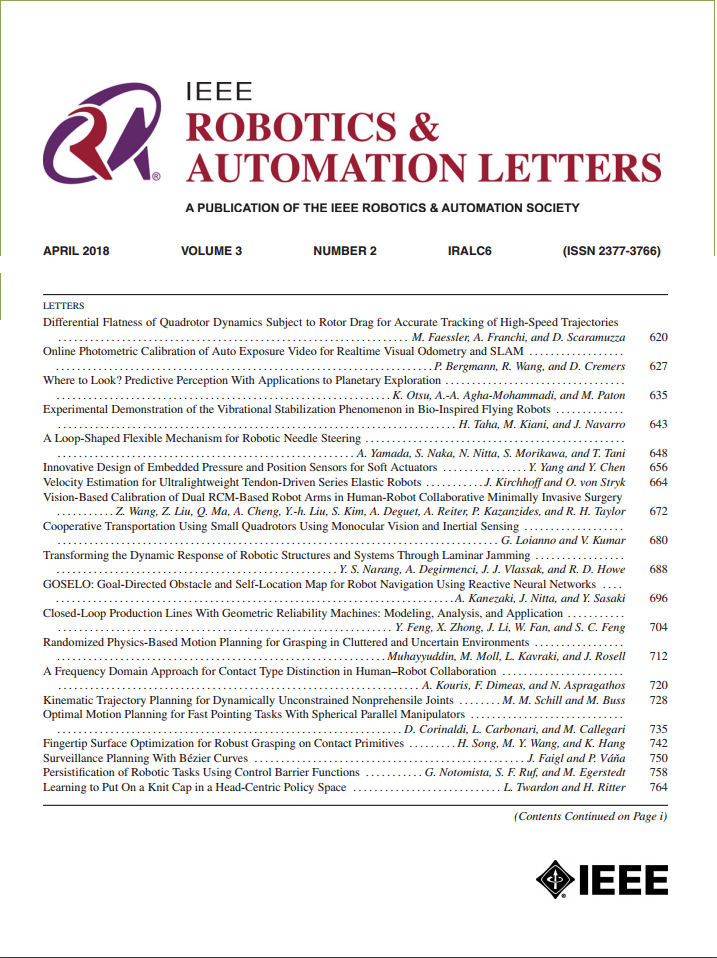Neural Profiling With fNIRS of Operator Performance in Teleoperated Human-Like Social Robot Interactions
IF 5.3
2区 计算机科学
Q2 ROBOTICS
引用次数: 0
Abstract
Social robot teleoperation is a skill that must be acquired through practice with the social robot. Mobile neuroimaging and human-computer interface performance metrics permit the gathering of information from the operators’ systemic and behavioral responses associated with their skill acquisition. Profiling the skill levels of social robot operators using this information can help improve training protocols. In this study, thirty-two participants performed real-world social robot teleoperation tasks. Brain function signals from the prefrontal cortex (PFC), and behavioral data from interactions with the system were collected using functional near-infrared spectroscopy (fNIRS). Participants were divided into two groups (high and low performance) based on an integrative metric of task efficiency, workload, and presence when operating the social robot. Significant differences were found in the operation time, width, and multiscale entropy of the hemoglobin oxygenation curve of the operator’s PFC. Functional connectivity in the PFC also depicted differences in the low- and high-performance groups when connectivity networks were compared and in the leaf fraction metrics of the functional networks. These findings contribute to understanding the operator’s progress during teleoperation training protocols and designing the interface to assist in enhancing task performance.遥控类人社交机器人交互中操作者行为的fNIRS神经分析
社交机器人遥操作是一项必须通过与社交机器人的实践才能掌握的技能。移动神经成像和人机界面性能指标允许从操作员的系统和行为反应中收集与他们的技能习得相关的信息。利用这些信息分析社交机器人操作员的技能水平可以帮助改进培训协议。在这项研究中,32名参与者执行了现实世界的社交机器人远程操作任务。使用功能近红外光谱(fNIRS)收集来自前额叶皮层(PFC)的脑功能信号以及与系统相互作用的行为数据。参与者根据任务效率、工作量和操作社交机器人时的存在度的综合指标分为两组(高绩效组和低绩效组)。在操作时间、宽度和操作员的PFC血红蛋白氧合曲线的多尺度熵上发现了显著差异。当连接网络进行比较时,PFC的功能连通性也描述了低和高性能组之间的差异,以及功能网络的叶分数指标。这些发现有助于理解操作员在远程操作训练协议中的进展,并设计界面以帮助提高任务性能。
本文章由计算机程序翻译,如有差异,请以英文原文为准。
求助全文
约1分钟内获得全文
求助全文
来源期刊

IEEE Robotics and Automation Letters
Computer Science-Computer Science Applications
CiteScore
9.60
自引率
15.40%
发文量
1428
期刊介绍:
The scope of this journal is to publish peer-reviewed articles that provide a timely and concise account of innovative research ideas and application results, reporting significant theoretical findings and application case studies in areas of robotics and automation.
 求助内容:
求助内容: 应助结果提醒方式:
应助结果提醒方式:


